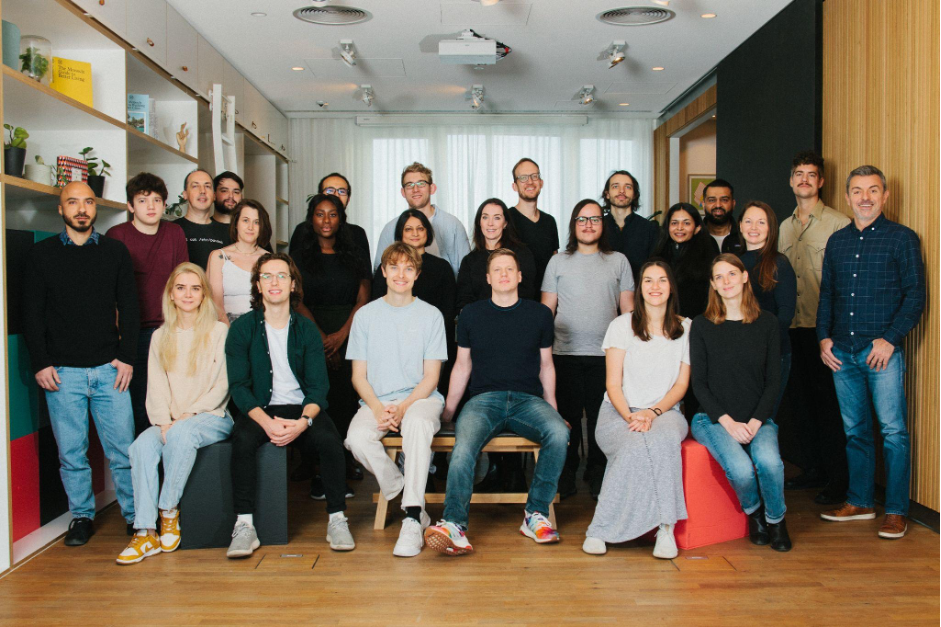Anna King is Commercial Director for the Health Innovation Network South London. In this blog she reflects on learnings from the Royal College of Obstetricians and Gynaecologists' International Women's Day event and the opportunities to maximise the impact of innovation on women's health.
This week, the Health Innovation Network had the privilege of participating at the Royal College of Obstetricians and Gynaecologists (RCOG) International Women’s Day event. The theme of the event was ‘Innovation and Action in Global Gynaecological Healthcare’, which shows the important that the College is placing on innovation to improve the health and care for women globally.
The whole event was inspirational, with speakers talking to how they are testing and implementing innovations to their clinical colleagues, whether new medical devices, diagnostics or digital solutions.
The event was a fantastic opportunity to catch up with some of the alumni innovators from our DigitalHealth.London Accelerator programme – which support companies to spread and scale. I was particularly proud that the team from the South West London Integrated Care System were able to highlight how they are using GetUBetter to support the women’s pelvic health in the gynaecological pathways, in addition to the other muscular offering.
The Health Innovation Network was delighted to specifically partner with Professor Asma Khalil, Vice President for Academia and Strategy as well as Consultant in Obstetrics and Fetal Medicine and St George’s University Hospital, on the last session of the day ‘Celebrating the innovation driving women’s health improvement’.
This session gave the audience an opportunity to hear about some fantastic innovators, many of whom have benefited by working with their local health innovation network. I was pleased to have an opportunity to draw out many of the lessons we have learnt supporting innovators. Highlights included:
- Hearing about their continued successes of PLEXaa, who participated the the Accelerating FemTech Programme we ran for InnovateUK, in partnership with RCOG and others. Plexaa is helping breast cancer patients in the US and UK benefit from better wound care healing was a personal highlight.
- Learning about The Tydeman Tube, which was developed at St Thomas’s hospital to assist with the caesarean delivery and is being launched to the market soon.
- Professor Angie Doshani, founder of the JanamApp, discussing how partnering with your target audience can lead to co-designed and co-produced innovative health solutions. In the case of JanamApp, this kind of partnership led the development of a pregnancy information app for the south Asian community in a completely different direction to what had originally been envisaged
Listening to our FemTech alumni and some other brilliant innovators in this space also prompted me to reflect on some of the commonalities associated with success. A great idea is of course a fairly essential prerequisite for innovation. But one of the foundational understandings of our DigitalHealth.London programmes is that a good idea in and of itself is rarely enough to make an impact on patients or health and care systems. Innovation is a team sport, and often it is collaboration which makes the difference between a great idea and a truly impactful product.
Many healthtech innovations are the brainchild of clinicians. But regardless of individual brilliance, there will be times where you need to bring in a wider team, different perspectives, or a new connection to make the most of your innovation.
In a week where we launched applications for our latest DigitalHealth.London Evidence Generator Bootcamp, it seemed particularly timely that a number of innovators reflected on the challenges of evidence generation and regulatory approval. Finding the right expert partners is essential for navigating these complex but entirely necessary areas of innovation.
This is also where the programmes of the health innovation networks, like DigitalHealth.London or Accelerating FemTech, can help by introducing you to the range of experts needed, whether regulator, governance, or other specialism. The good news is that the UK innovation sector is full of partners ready and willing to help turn good ideas into real-world impact. From world-leading professional institutions with a tradition of progressive thinking such as RCOG through to a variety of new funding opportunities becoming available through UK Research and Innovation and other sources, the sector is primed for global success.
Dr Ranee Thakar, RCOG Chair, closed the IWD conference by urging delegates to “harness the potential” of innovation. I feel confident that through the Health Innovation Networks nationally, and the exciting programmes of innovator support we have planned locally like Accelerating FemTech and the DigitalHealth.London Accelerator, we can use partnerships to harness innovation to improve health and care.
Find out how we can support your innovation
We support innovators to turn great ideas into real-world impact. Get in touch to see how you could benefit from our support programmes and expert NHS and social care advice.
Get in touch







































